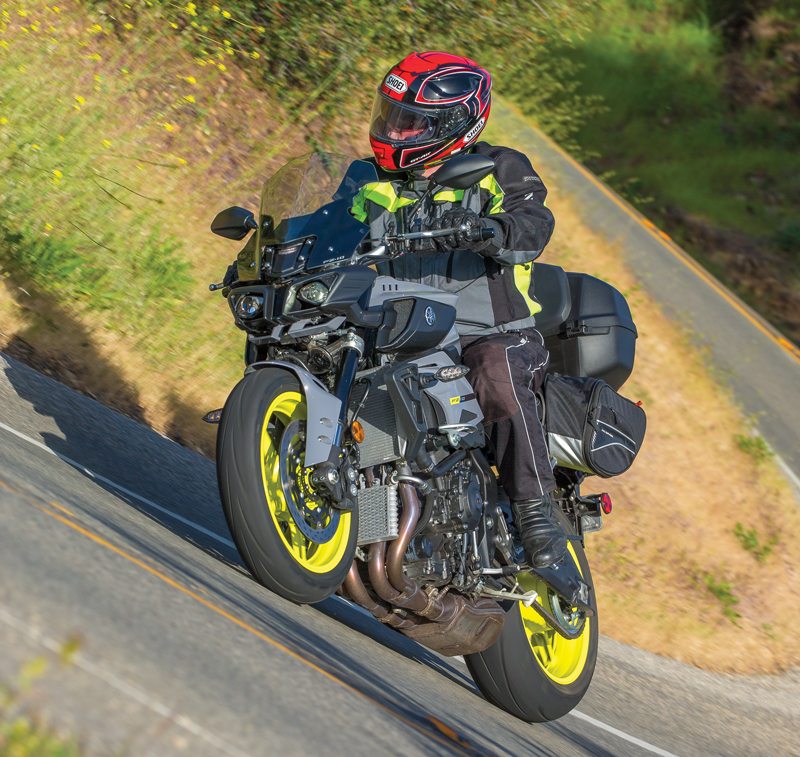
Right after I tumbled into my forties in 2000, I began to develop an intolerance for low clip-on handlebars and high rearset footpegs on long rides. On the racetrack, fine, but for more than a couple hours on the street I could no longer see the point of being scrunched up like a jockey. As luck would have it, right about then the motorcycle manufacturers obliged with a wave of sport standards based on their premium sportbikes. For weekend sport riding and sport touring, these bikes still brought sharp handling, premium suspension and the exciting snap of a race-bred engine to the game, but their relatively upright, relaxed seating positions meant the ol’ bod no longer complained after a couple hours in the saddle. The Ducati Monster, Suzuki Bandits, Triumph Speed Triple and Kawasaki ZRX1100/1200 got the comfort/performance ball rolling, but it was the 2001 Yamaha FZ-1 that really kicked it downfield.
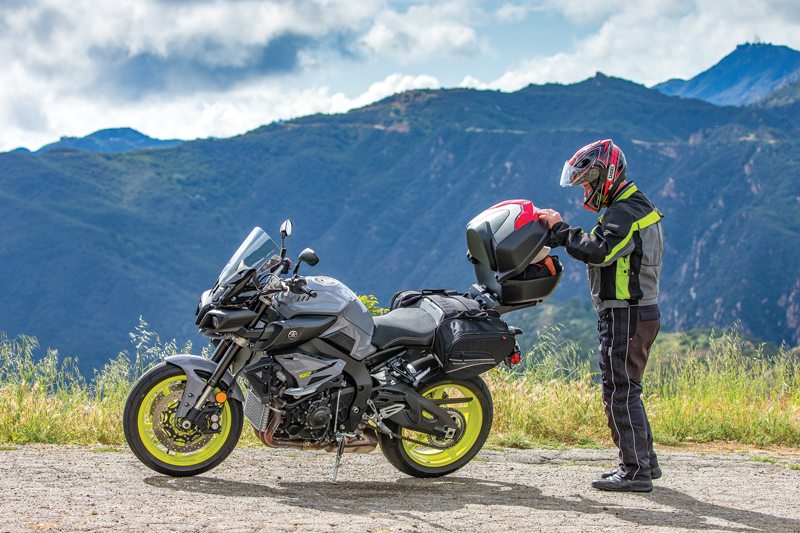
Based on the 150-horsepower YZF-R1 sportbike, a long list of engine changes gave the FZ-1 a wider, flatter torque curve for street riding, yet retained almost all of the engine’s ponies. Though the comfortable bike also handled really well, Yamaha stopped short of blessing its sport standard with the R1’s exotic aluminum Deltabox frame, settling for a tubular-steel perimeter chassis to provide for a vibration-reducing engine mounting system. As such the FZ-1 was heavier and didn’t tear up the corners quite as well as the R1, but it was and still remains a capable sport standard.
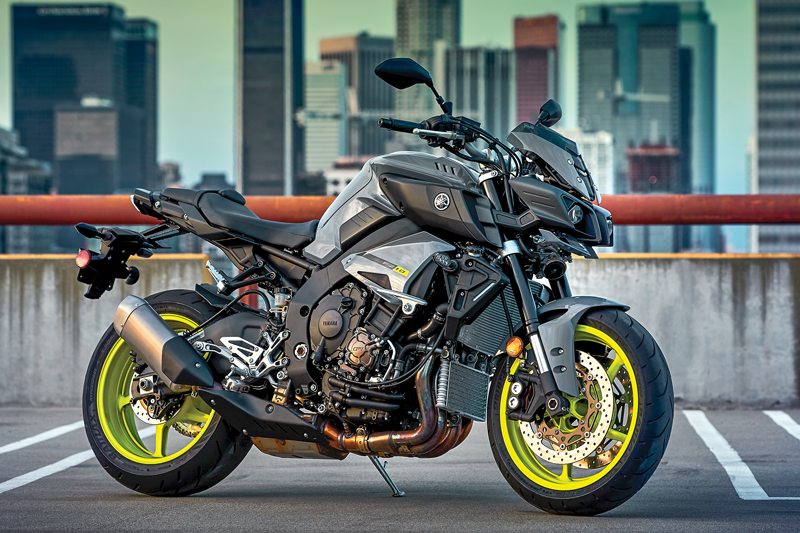
Fast-forward to 2017 and both an FZ sport standard and YZF-R1 sportbike still dominate Yamaha’s liter-class lineups, but the gap separating the new FZ-10 and 2017 R1 superbike is much narrower. The FZ-10’s 998cc, DOHC in-line four, Deltabox aluminum main frame, braced aluminum swingarm and KYB suspension are all R1 derived, the Crossplane engine is mounted as a stressed member like the R1’s and at 463 pounds wet, the FZ-10 is just 24 pounds heavier. As usual the low- and midranges of the FZ-10’s powerband were fortified for roadwork by using smaller valves and mellower cam timing, and instead of the R1’s two injectors per cylinder, a single but 25-percent larger nozzle dumps more fuel in at lower
engine speeds. The FZ-10’s airbox is also larger than the R1’s to account for less ram air effect at street speeds (those scoops flanking the tank are just for show), and redline is lower at 12,200 vs. the R1’s screaming 14,500.
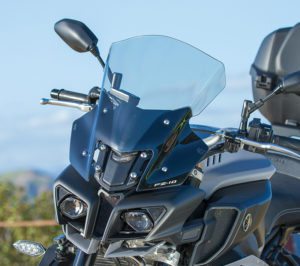
The overall result is easy rideability for commuting and touring with some really serious power on tap, enough to lighten the front with a sharp twist of the throttle and emit a wicked, racy sound from the FZ-10’s four-into-one stainless-steel exhaust and titanium muffler. On the Jett Tuning dyno the FZ-10 made an impressive 137.7 peak horsepower at 9,400 rpm at the back wheel, and spun the drum with 77.3 lb-ft of torque at 9,200. Yamaha Chip Controlled Throttle, a.k.a. throttle-by-wire, allowed the incorporation of three engine modes—B, Standard and A—that offer varying levels of throttle response for sport riding or touring, yet all deliver the same peak power. B mode is the sportiest and most direct, A only sharpens low- and midrange response and Standard delivers the smoothest overall response for most riding. The bike also has traction control with three levels ranging from complete intervention to permitting wheelies and other antics, and even electronic cruise control, which takes some of the work out of boring stretches.
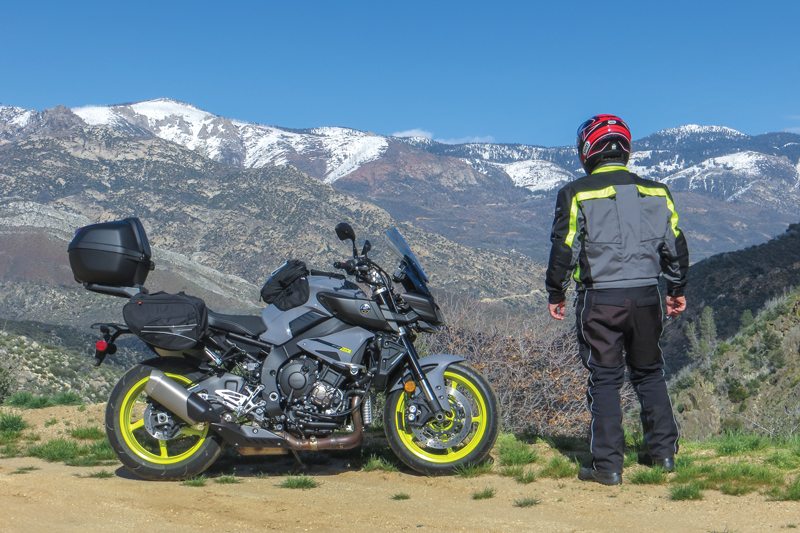
At the FZ-10’s introduction in Tennessee on the Tail of the Dragon, it was clear that the bike possesses razor-sharp handling, with high-end, fully adjustable suspension and strong brakes with ABS that deliver excellent compliance and feedback. Blessed with a raft of tuning tricks to better suit it to the street, its raucous engine also has no shortage of low- and midrange grunt to sling it from corner to corner, and pushed to near redline it makes enormous power and a great sound. Our tester found it comfortable on the short intro ride, too, with plenty of legroom and a slight amount of forward lean. All good, but we wondered: By more closely imitating the R1’s level of performance, had the FZ-10 lost the all-day comfort and everyday riding versatility of its FZ-1 predecessor?
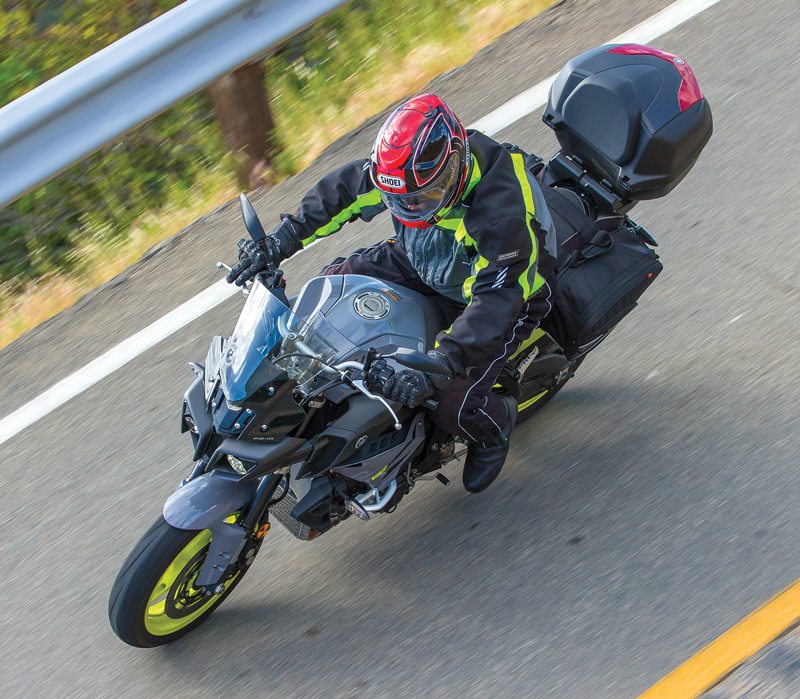
To find out, Yours Truly mapped out a 600-mile, two-day route into the Sequoia National Forest around Lake Isabella, California, more than half of which consisted of gnarled, twisting roads that are the FZ-10’s home turf. The next step was to add some accessories, like Yamaha’s 39-liter Top Case for the FZ-10, which will easily carry a full-face helmet and a few other items. A pair of Nelson-Rigg CL-950 Deluxe Saddlebags, which hold about 20 liters per side, slipped on easily over the back seat. Spring had just sprung, but it was still cold in the mountains and I needed some space for layers.
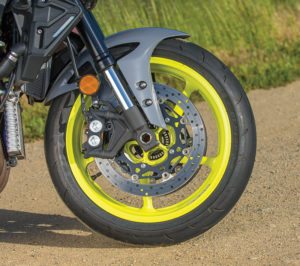
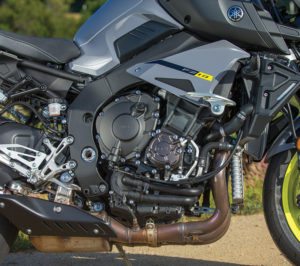
The FZ-10 has LED lighting all around, and its small, bright headlights live in the frame-mounted front cowl, which sports a surprisingly effective but short windscreen. Given the cooler temps and spring bug invasion, I also decided to try Yamaha’s Mid-Height Windscreen, which is about 10 inches taller and helps keep the windblast and kamikaze creatures off the rider’s torso, though it does increase wind noise (you wear earplugs anyway, right?). From several shakedown rides I already knew that the FZ-10’s stock seat with its amusing “hip stopper” was fine for short rides, but too thin and hard for touring, so I swapped it for Yamaha’s nicely finished Comfort Seat for the FZ-10. It’s wider and adds more than an inch of firm, supportive padding that put me on my tiptoes at stops, but the extra comfort was worth it.
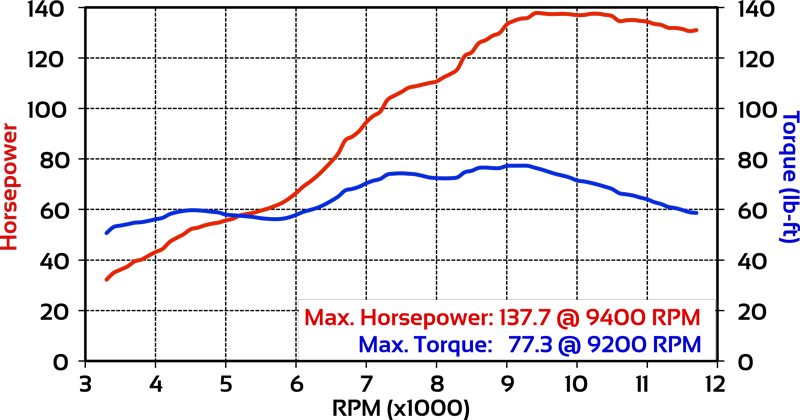
I had no trouble staying on the Comfort Seat from fill-up to fill-up, but as I quickly found out that wasn’t very long. The FZ-10 has a powerful thirst for premium fuel, averaging just 33.5 mpg over seven fill-ups of its smallish 4.5-gallon tank. On the last tank I pushed it as far as I dared and rolled up 149 miles, with 3/10ths of a gallon remaining. The bike’s best fuel economy on our watch was 36.1 mpg, so you will need to adjust your waypoints accordingly. It doesn’t help that there’s no increment on the fuel gauge between full and half-full.
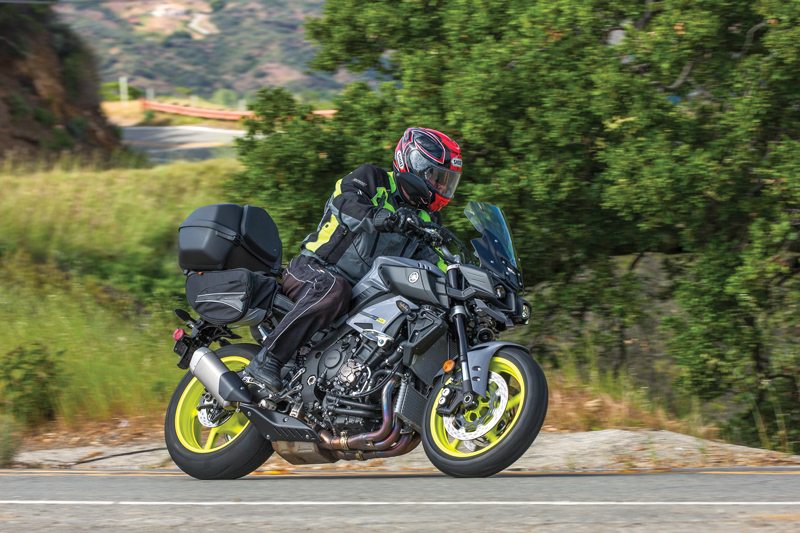
From the wildflowers on State Route 33 and pine trees on Lockwood Valley Road, I slabbed it on Interstate 5 over the famous Grapevine, which was exploding with blue and yellow blooms on the hillsides. Crossing the Central Valley on farm roads through Arvin, State Route 223 brought me to the start of Caliente-Bodfish Road, a sport rider’s delight that twists up to Isabella through the old mining town of Havilah, the former seat of Kern County.
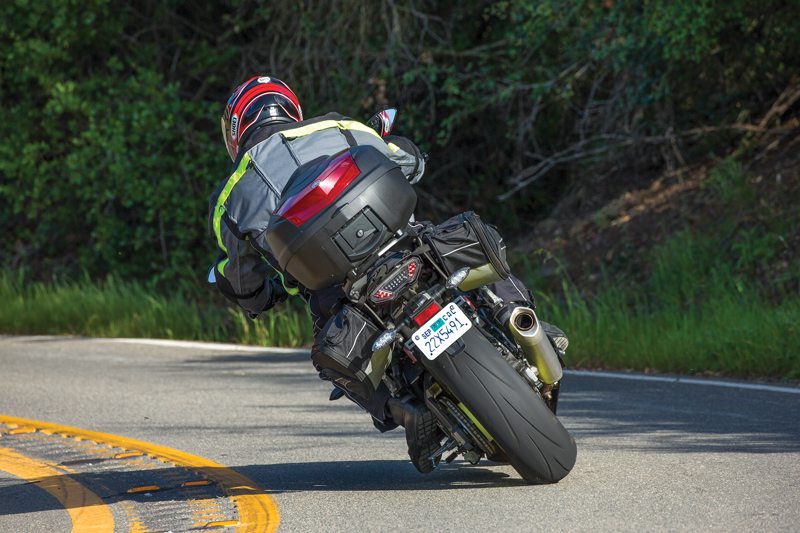
The night before the ride I noticed that the FZ-10’s stock rear Bridgestone Hypersport S20 tire was toast after just 2,600 miles. That’s what I get for loaning it to a certain throttle-happy photographer, but revenge is mine—he used to really like his first-gen FZ-1. Fortunately the guys at Jett Tuning were able to spoon on a set of Dunlop Sportmax Q3 tires we had in the shop at the 11th hour. The Q3s worked well on the often-dirty roads on the ride, and later on the bike’s photo shoot, they stuck fast and enhanced the bike’s handling in high-speed corners. In the tight twisties of Caliente-Bodfish, I could really feel the FZ-10’s speed sensitive steering damper do its job, too, especially when accelerating hard over small rises in the road. My only gripe is that the 6-speed transmission doesn’t shift as cleanly as many high-end sportbikes, though the assist-and-slipper clutch does have a fairly light feel.
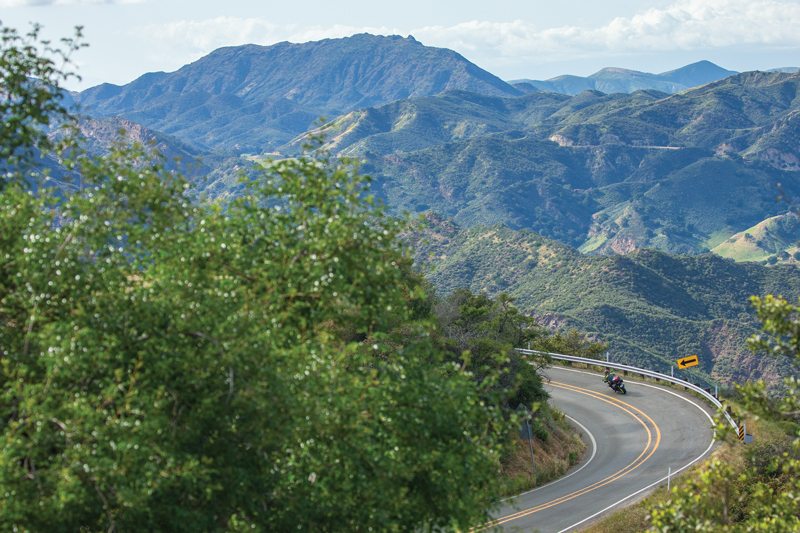
After exploring the mountain roads north of Kernville, I considered spending the night there, but I was comfortable on the FZ-10 and just didn’t feel like stopping. Adjusting my speed and keeping a wary eye out for deer in the late afternoon hour, winding State Route 155 took me west past Glennville to Granite Road north of Bakersfield, an absolutely stunning bit of twisting, smoothly paved mountain road lined with oak tress, large boulders and endlessly green fields. Even at higher rpm, vibration is never an issue on the FZ-10, and the fully featured LCD instrument panel is easy to read in any light and has a fuel gauge, trip computer, gear indicator, clock and programmable shift light. Other conveniences include an adjustable brake lever and 12-volt power outlet, and long 26,600-mile inspection intervals for the shim-over-bucket valves.
After a quiet night on the outskirts of Bakersfield I was ready to head for the barn, so I took the back way to Taft, had lunch and scooted back over Route 33 to Ventura and Camarillo. It’s been a long time since I’ve taken a sport standard like this on a long ride, and the FZ-10 did not disappoint. Styling a naked motorcycle that started as a contemporary sportbike is always a challenge, and the FZ-10’s muscular, futuristic look isn’t to everyone’s liking. But if it and the fuel range are acceptable, the FZ-10 is a fun and exciting ride in almost every other way.
Mark’s Gear:
Helmet: Shoei GT-Air
Jacket: Olympia Nomad
Pants: Olympia X-Moto 2
Boots: Dainese Long Range
2017 Yamaha FZ-10 Specs
Base Price: $12,999
Price as Tested: $14,406 (Comfort Seat, Mid-Height Windscreen, 39L Top Case, Frame Sliders)
Warranty: 12 mos., unltd. miles
Website: yamahamotorsports.com
Engine
Type: Liquid-cooled, transverse in-line four
Displacement: 998cc
Bore x Stroke: 79.0 x 50.9mm
Compression Ratio: 12.0:1
Valve Train: DOHC, 4 valves per cyl.
Valve Insp. Interval: 26,600 miles
Fuel Delivery: Mikuni EFI w/ Y-CCT
Lubrication System: Wet sump, 4.3-qt. cap.
Transmission: 6-speed, cable-actuated wet assist & slipper clutch
Final Drive: O-ring chain
Electrical
Ignition: TCI
Charging Output: 368 watts @ 5,000 rpm
Battery: 12V 10AH
Chassis
Frame: Aluminum-alloy diamond Deltabox w/ steel seat subframe & braced aluminum swingarm
Wheelbase: 55.1 in.
Rake/Trail: 24.0 degrees/4.0 in.
Seat Height: 32.5 in. (stock seat)
Suspension, Front: 43mm USD fork, fully adj., 4.7-in. travel
Rear: Single shock w/ piggyback reservoir, fully adj., 4.7-in. travel
Brakes, Front: Dual 320mm discs w/ radial-mount opposed 4-piston calipers & ABS
Rear: Single 220mm disc w/ 1-piston floating caliper & ABS
Wheels, Front: Cast, 3.50 x 17 in.
Rear: Cast, 6.00 x 17 in.
Tires, Front: 120/70-ZR17
Rear: 190/55-ZR17
Wet Weight: 489 lbs. (as tested)
Load Capacity: 349 lbs. (as tested)
GVWR: 838 lbs.
Performance
Fuel Capacity: 4.5 gals., last 1.0 gal. warning light on
MPG: 91 PON min. (low/avg/high) 26.2/33.5/36.1
Estimated Range: 151 miles
Indicated RPM at 60 MPH: 4,100

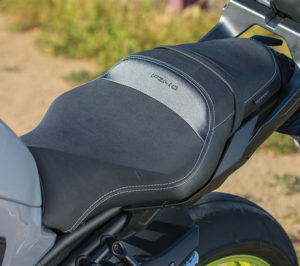
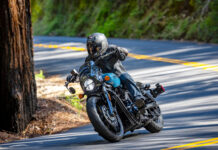






This a great looking bike! great for sport touring! Thanks for the article and the specs!
It can’t be a touring bike with that small gas tank. Realistically, people need to stop every 100 miles to fill it up.
Every 145ish at highway speeds to be exact 😉
I do prefer the SHAD bag system on my FZ-10 over the ones used in the test, but I get why they used easily removable ones. I was surprised at first too on my MPG but as many have said “more smiles per mile” applies to the FZ. I couldn’t agree more. I’m in a minority that doesn’t mind the stock seat but I also haven’t really gone more then 100 miles without stopping.
Gear box wise I’m not of the same opinion. I’ve owned many others much more clunky then this one but I really haven’t road any real high end sports bikes lately either.
Still a Contender for my, “Retirement bike,” in 2020, if I choose to replace my great 2008 FZ1. Last year I rode from Sacramento to Bakersfield (SB99) visit Dad. To have some fun, I rode home on Hwy 41 to NB-49 at Oakhurst, all the way home to Sutter Creek, then Hwy 16 to Sacramento. Would love to do it all over again on a newer Naked like the FZ10-SP.
I have the FZ10 with the Shad bags, givi sport screen and comfort seat and absolutely love it! been on a few long tours and don’t mind the fill ups at all. Gives you a chance to stretch the legs. Bike is amazing, LOVE it!
I’ve had the FZ10 for almost two years with Shad bags and even with 20+ lbs. in each the handeling is impeccable. The fuel range is a bit of an irritation for me. With leathers or touring pants the seat is bearable. A Yoshi exhaust adds to the stock twitchy throttle, but I’ve adjusted to it. The clutch is very grabby when cold but smooths on warm up. Stock suspension settings are very harsh and backing everything off helps. The sharp corner styling makes it a pain to keep clean. It isn’t perfect but I do love the bike.
I was looking at this bike initially but went with the KTM Super Duke GT and I am glad that i did. Back at the time i didn’t realize that the the KTM has 30 lbs more torque and at least 10 more hp. I got a left over 2016 at $16,900 with .99% percent financing. Yamaha did not offer any help what so ever with financing or anything.
So, Yamaha Just changed its name